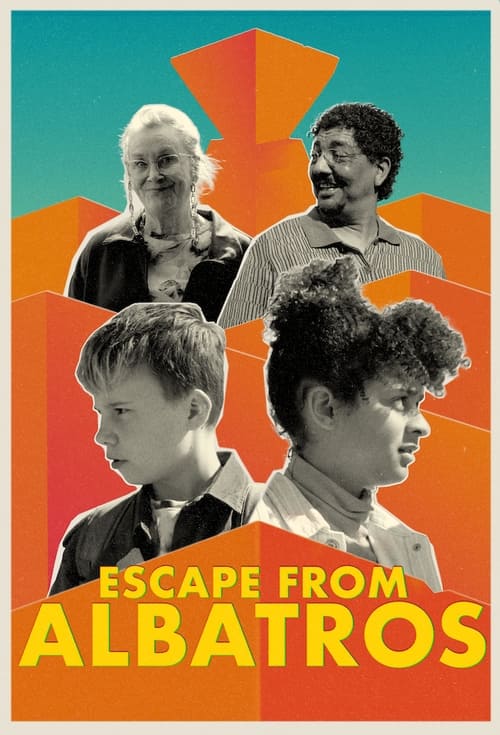
Ask Your Own Question
What is the plot?
In Episode 103 of "Lisa," the episode opens with Lisa waking up in her small, cluttered apartment, the morning light filtering through the curtains. She stretches and glances at her phone, noticing several missed messages from her best friend, Mia, who is eager to catch up. Lisa's expression shifts from groggy to anxious as she remembers the previous night's events, where she had a heated argument with her boss at work. Determined to shake off the tension, she quickly gets ready, her movements hurried and slightly frantic.
As Lisa steps out of her apartment, she is greeted by the bustling sounds of the city. She walks briskly to her job at a local café, her mind racing with thoughts about the confrontation with her boss. Flashbacks of the argument play in her head, highlighting her feelings of frustration and inadequacy. Upon arriving at the café, she is met with a cold reception from her boss, who is still upset about the previous night. Lisa tries to maintain her composure, but the tension is palpable, and she feels the weight of her boss's disapproval.
During her shift, Lisa encounters a regular customer, an older man named Mr. Thompson, who always shares stories from his life. He notices Lisa's distracted demeanor and offers her a kind word, which momentarily lifts her spirits. Their conversation reveals Lisa's passion for art, and Mr. Thompson encourages her to pursue her dreams. This interaction serves as a brief respite from her stress, and Lisa feels a flicker of hope as she contemplates her artistic aspirations.
Later in the day, Mia arrives at the café, excited to see Lisa. They share a warm hug, and Mia immediately senses that something is off. Lisa confides in her about the argument with her boss and her growing dissatisfaction with her job. Mia listens intently, offering support and suggesting that Lisa should consider taking a leap of faith and exploring her art more seriously. This conversation reignites Lisa's passion, and she begins to contemplate the possibility of showcasing her work.
As the day progresses, Lisa receives a call from an art gallery that had previously shown interest in her work. They invite her to submit a piece for an upcoming exhibition. Overwhelmed with a mix of excitement and fear, Lisa hangs up and shares the news with Mia, who encourages her to seize the opportunity. However, Lisa's self-doubt resurfaces, and she worries about whether her art is good enough.
That evening, Lisa sits at her desk, surrounded by her art supplies, staring at a blank canvas. The pressure of the upcoming exhibition weighs heavily on her, and she struggles to find inspiration. Frustrated, she pushes the canvas away and takes a break, scrolling through social media. She sees posts from other artists showcasing their work, which only deepens her insecurities. In a moment of vulnerability, she calls Mia, expressing her fears about not being ready for the exhibition.
Mia reassures Lisa, reminding her of her talent and the importance of believing in herself. This conversation reignites Lisa's determination, and she returns to her canvas with renewed energy. As she begins to paint, the colors flow from her brush, and she loses herself in the creative process. The scene is filled with vibrant visuals of her artwork coming to life, symbolizing her emotional journey.
The episode culminates with Lisa completing her piece just in time for the submission deadline. She stands back to admire her work, a mix of pride and anxiety washing over her. The final shot captures her deep breath as she prepares to send a photo of her artwork to the gallery, marking a significant step in her journey toward pursuing her passion. The screen fades to black, leaving viewers with a sense of anticipation for what lies ahead in Lisa's artistic journey.
What is the ending?
In the ending of "Lisa," season 1, episode 103, Lisa confronts her fears and insecurities, leading to a pivotal moment of self-acceptance. The episode culminates in a heartfelt resolution where Lisa embraces her true self, while her relationships with her friends and family evolve positively. The episode closes with a sense of hope and new beginnings for Lisa and those around her.
As the episode unfolds, we find Lisa in a state of turmoil, grappling with the emotional weight of her recent experiences. The scene opens in her bedroom, where she sits on her bed, surrounded by scattered notes and sketches that reflect her inner struggles. The dim light filtering through the curtains casts a somber mood, mirroring her feelings of doubt and confusion. Lisa's internal monologue reveals her fears about not being good enough, both in her personal life and her aspirations.
Transitioning to a coffee shop, Lisa meets with her best friend, Mia. The atmosphere is lively, filled with the chatter of patrons and the aroma of freshly brewed coffee. Mia, sensing Lisa's distress, encourages her to open up about her feelings. As they talk, the camera captures the warmth of their friendship, highlighting the support and understanding that exists between them. Lisa's vulnerability shines through as she shares her insecurities, and Mia reassures her that it's okay to feel lost sometimes.
The scene shifts to a family dinner at Lisa's home. The table is set with a colorful spread, but the mood is tense. Lisa's parents engage in a heated discussion about her future, their expectations weighing heavily on her. Lisa's father, in particular, expresses disappointment in her choices, which deepens her sense of inadequacy. The camera focuses on Lisa's face, capturing her struggle to maintain composure as she fights back tears. This moment underscores the conflict between her desires and her family's expectations.
Later, Lisa takes a solitary walk in a nearby park, the vibrant colors of autumn leaves contrasting with her somber mood. As she walks, she reflects on her journey, the camera panning to show her deep in thought. The sounds of laughter from children playing nearby serve as a reminder of the joy she longs to reclaim. In this moment of solitude, Lisa begins to realize that she must confront her fears head-on.
The climax of the episode occurs during a community art showcase, where Lisa has the opportunity to display her work. The venue is bustling with energy, filled with artists and art enthusiasts. As Lisa stands before her piece, a mixed media representation of her struggles and triumphs, she feels a surge of anxiety. However, as she looks around at the supportive faces of her friends and family, she finds the courage to speak about her art and what it represents.
In a powerful moment of self-acceptance, Lisa shares her story with the audience, her voice trembling but resolute. The camera captures the expressions of those listening, their empathy and admiration evident. This scene serves as a turning point for Lisa, as she embraces her identity and the journey that has shaped her.
The episode concludes with Lisa surrounded by her friends and family, their faces beaming with pride. The atmosphere is filled with laughter and celebration, a stark contrast to the earlier tension. Lisa's parents, now more understanding, express their support for her choices, signaling a shift in their relationship. The final shot lingers on Lisa's face, a mixture of relief and joy, as she realizes that she is not alone in her journey.
In the end, Lisa's fate is one of growth and newfound confidence. She has learned to embrace her true self, and her relationships have deepened as a result. Mia remains a steadfast friend, while Lisa's family begins to understand and accept her for who she is. The episode closes on a hopeful note, suggesting that while challenges may remain, Lisa is ready to face them with resilience and support.
Is there a post-credit scene?
In "Episode 103" of the show "Lisa," there is indeed a post-credit scene that adds an intriguing layer to the episode's narrative.
As the credits roll, the screen fades to black before transitioning to a dimly lit café. The atmosphere is cozy yet charged with an underlying tension. Lisa is seated at a small table, her fingers nervously tapping against her coffee cup. She appears deep in thought, her brow furrowed, reflecting the weight of the decisions she has been grappling with throughout the episode.
Suddenly, the door swings open, and a figure enters. It's a character from earlier in the season, someone who has been a source of both support and conflict for Lisa. Their eyes meet, and a moment of silence hangs in the air, thick with unspoken words and unresolved feelings. The character approaches Lisa, their expression a mix of concern and determination.
"Can we talk?" they ask, their voice low but urgent. Lisa hesitates, her internal conflict evident as she weighs the implications of this conversation. The camera zooms in on her face, capturing the flicker of vulnerability in her eyes, hinting at her desire for connection but also her fear of what it might mean.
The scene ends with Lisa taking a deep breath, her decision hanging in the balance, leaving viewers on the edge of their seats, eager to see how this pivotal moment will unfold in future episodes. The post-credit scene effectively encapsulates the emotional stakes of the series, reinforcing the themes of connection, choice, and the complexities of relationships that are central to Lisa's journey.
What challenges does Lisa face in her personal relationships in Episode 103?
In Episode 103, Lisa grapples with the fallout from a recent argument with her best friend, which leaves her feeling isolated and misunderstood. The tension escalates when she tries to reach out, but her friend is still hurt, leading to a series of awkward encounters that highlight Lisa's struggle to maintain her friendships while navigating her own emotional turmoil.
How does Lisa's family dynamic influence her decisions in this episode?
Lisa's family dynamic plays a crucial role in Episode 103 as she seeks approval from her parents regarding her career choices. The pressure from her mother, who has high expectations, causes Lisa to question her own desires, leading to a pivotal moment where she must choose between following her passion or conforming to her family's wishes.
What significant event occurs at Lisa's workplace in Episode 103?
At Lisa's workplace, a major project deadline looms, creating a tense atmosphere among her colleagues. Lisa's determination to prove herself leads her to take on extra responsibilities, but this decision backfires when she becomes overwhelmed, showcasing her internal conflict between ambition and self-care.
How does Lisa's character develop through her interactions with her mentor in this episode?
In Episode 103, Lisa's interactions with her mentor reveal her vulnerabilities and aspirations. Her mentor challenges her to step outside her comfort zone, which initially intimidates Lisa but ultimately inspires her to take risks. This relationship becomes a catalyst for her growth, as she learns to embrace her potential.
What internal conflicts does Lisa experience regarding her identity in this episode?
Throughout Episode 103, Lisa experiences significant internal conflict regarding her identity, particularly as she navigates societal expectations versus her true self. Moments of self-doubt arise when she compares herself to peers, leading to a poignant scene where she reflects on her values and what it means to be authentic in a world that often pressures conformity.
Is this family friendly?
In "Episode 103" of the show "Lisa," there are several elements that may be considered potentially objectionable or upsetting for children or sensitive viewers.
-
Emotional Conflict: The episode features intense emotional scenes where characters experience significant personal struggles, which may be distressing for younger audiences.
-
Family Tension: There are moments of conflict within the family that could be uncomfortable, showcasing arguments or disagreements that might resonate negatively with children.
-
Themes of Loss: The episode touches on themes of loss and grief, which could be heavy for sensitive viewers, especially younger children who may not fully understand these concepts.
-
Mature Discussions: Some conversations may include mature themes or topics that could be confusing or inappropriate for younger viewers.
-
Visuals of Distress: There are scenes that depict characters in distressing situations, which might be visually upsetting for some audiences.
These elements contribute to a narrative that, while rich in emotional depth, may not be suitable for all viewers, particularly children or those who are sensitive to such themes.

































